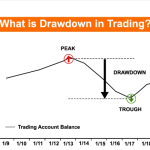
By ATGL
Updated December 24, 2024
Profitability ratios evaluate a company’s ability to generate profit relative to its revenue, balance sheet assets, or equity. These financial ratios provide insights into operational efficiency, financial performance, and overall business health. They are important for investors and analysts conducting financial analysis to identify opportunities or assess risks.
This article covers the common types of profitability ratios, their formulas, and their applications, helping you use these tools effectively in your investment decisions.
Common Types of Profitability Ratios and Their Formulas
Profitability ratios help you assess how well a company manages operating costs (such as rent), direct costs (for example, raw materials), and indirect costs (such as administrative salaries) to produce revenue. Below are the common profitability ratios, their formulas, and their practical uses.
Gross Profit Margin
The gross profit margin measures the percentage of sales revenue remaining after deducting the cost of goods sold (COGS), which includes production costs such as raw materials and labor.
Formula:
Gross Profit Margin (%)= (Revenue−COGS/Revenue)×100
Use Case: This ratio shows how efficiently a company converts its production costs into profits. Comparing the gross profit margin to industry standards helps you assess competitiveness and spot potential issues with pricing strategies or cost control.
Net Profit Margin
The net profit margin reveals the percentage of profit a company retains from its sales revenue after accounting for all operating expenses, interest, and taxes.
Formula:
Net Profit Margin (%)=(Net Income/Revenue)×100
Use Case: Use this ratio to evaluate a company’s overall profitability. It also helps you understand how well the company manages its operating costs and other expenses to maximize the portion of revenue retained as profit.
Operating Profit Margin
The operating profit margin focuses on profits generated from core business activities before accounting for interest and taxes. It reflects how well a company manages its operating expenses.
Formula:
Operating Profit Margin (%)=(Operating Income/Revenue)×100
Use Case: This ratio is useful for comparing companies’ operational efficiency, especially when aligning performance with industry benchmarks. A strong operating profit margin can indicate robust management practices and the ability to weather changes in market conditions.
Return on Assets (ROA)
The return on assets (ROA) calculates how effectively a company uses its balance sheet assets to generate profit. It measures overall efficiency in utilizing resources.
Formula:
ROA (%)=(Net Income/Total Assets)×100
Use Case: A higher ROA indicates better asset utilization, making this a valuable metric when comparing companies in the same industry. It also reflects how effectively a company’s leadership manages its balance sheet assets to generate earnings.
Return on Equity (ROE)
The return on equity (ROE) measures a company’s profitability in relation to shareholders’ equity. It shows how effectively a business generates returns for its investors.
Formula:
ROE (%)=(Net Income/Shareholder Equity)×100
Use Case: ROE is a key ratio for assessing financial performance. Investors often use it to identify companies that generate superior returns on equity compared to industry benchmarks, making it a cornerstone of equity valuation and investment analysis.
Uses of Profitability Ratios and Best Practices
Here’s how profitability ratios are commonly used when analyzing a company’s financial statements and making informed decisions:
- Evaluating Financial Health: Profitability ratios provide a snapshot of a company’s financial stability. For example, metrics like the ROA and ROE reveal how well a business is using its balance sheet assets and shareholder investments to generate earnings.
- Comparing Companies: By benchmarking a company’s ratios against industry standards and industry benchmarks, you can identify how it performs relative to competitors. For example, a higher operating profit margin compared to industry peers might indicate superior cost management and operational efficiency.
- Analyzing Cost Management: Profitability ratios help you break down how effectively a company manages operating expenses, direct costs, and indirect costs. Metrics such as the gross profit margin indicate whether the company is optimizing its cost of sales, while the operating profit margin measures how well it controls overhead expenses.
- Supporting Investment Analysis: Investors rely on profitability ratios to determine whether a company is a sound investment. A consistently high net profit margin or ROE signals that the company efficiently converts sales revenue into profits and delivers strong returns for shareholders.
- Identifying Trends: Profitability ratios can reveal long-term trends in a company’s financial performance. By analyzing these metrics over multiple reporting periods, you can spot patterns of improvement or decline. For instance, a steadily increasing ROA may suggest better asset utilization, while a declining gross profit margin might point to rising production costs or pricing pressures.
Best Practices:
- Combine profitability ratios with liquidity ratios like the current ratio and quick ratio for a more well-rounded evaluation of a company’s financial health, particularly when assessing the sustainability of operating income.
- Compare ratios over multiple periods to spot trends so that your analysis accounts for seasonal or cyclical variations.
- Use profitability ratios alongside metrics like cash flow and the efficiency ratio for a comprehensive assessment.
Limitations of Profitability Ratios
Although profitability ratios are essential tools for financial analysis, they have limitations:
- Industry Variations: Profitability ratios can vary significantly across industries, making cross-industry comparisons less meaningful.
- Exclusion of Qualitative Factors: Ratios don’t account for factors like market conditions, competitive positioning, or management quality.
- Potential Data Manipulation: Understand that accounting methods or one-time adjustments can influence profitability ratios. Scrutinize the income statement and financial statements to identify any unusual items that may distort the ratios.
- Historical Data: Profitability ratios rely on past performance and may not reflect future outcomes.
- Limited Scope of Financial Insight: Profitability ratios primarily focus on profit generation and do not provide insights into liquidity, solvency, or cash flow stability.
- Impact of Economic Conditions: External factors, such as inflation, currency fluctuations, or changes in consumer demand, can distort profitability ratios, making it challenging to assess a company’s true financial performance in isolation.
Best Practices:
- Combine profitability ratios with other financial metrics like the current ratio, quick ratio, and cash flow for a more well-rounded evaluation of a company’s financial health.
- Contextualize profitability ratios by comparing them to industry standards and benchmarks to make sure your analysis aligns with sector-specific norms.
- Examine profitability ratios over several reporting periods to identify trends and account for seasonal or temporary fluctuations in financial performance.
Mastering Profitability Ratios for Better Decision-Making
Mastering profitability ratios empowers you to make informed investment decisions. By understanding how to calculate and interpret these key ratios, you can identify companies that manage operating costs, generate consistent cash flow, and maintain strong financial statements. However, always account for the broader context, including debt obligations and industry-specific factors.
At Above the Green Line, we provide tools and insights to help investors optimize their strategies. Whether you’re analyzing a company’s profit margin ratio or assessing its compliance with industry standards, our resources can guide you. Take the next step in enhancing your investment decisions by exploring our membership options.






